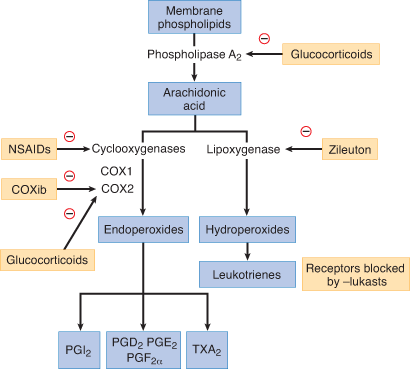If you’re preparing for the United States Medical Licensing Examination® (USMLE®) Step 1 exam, you might want to know which questions are most often missed by test-prep takers. Check out this example from Kaplan Medical, and read an expert explanation of the answer. Also check out all posts in this series.
This month’s stumper
A 72-year-old woman is brought to the emergency department by her son because of periorbital edema, a maculopapular rash on her chest and a fever of 38.3 °C (101 °F). She has a history of hypertension, diabetes and osteoarthritis. Laboratory studies of serum show:
Sodium - 139 mEq/L
Potassium - 4.8 mEq/L
Chloride - 100 mEq/L
Bicarbonate - 24 mEq/L
BUN - 52 mg/dL
Creatinine - 3.5 mg/dL
Urinalysis shows mild proteinuria and eosinophils. Which of the following drugs is most likely responsible for the findings seen in this patient?
A. Acarbose.
B. Clonidine.
C. Diltiazem.
D. Ibuprofen.
E. Metoprolol.
The correct answer is D.
Kaplan Medical explains why
Acute interstitial nephritis (AIN) is caused by an acute inflammation of the renal interstitium and is most likely related to a hypersensitivity reaction caused by a drug.
Examples of medications that can cause AIN include nonsteroidal anti-inflammatory drugs (NSAIDs) such as ibuprofen and indomethacin; antibiotics (most common) such as penicillins (especially methicillin), cephalosporins, and sulfonamides; diuretics such as furosemide and thiazides; and other drugs such as phenytoin, cimetidine, allopurinol, and proton pump inhibitors. Other, less frequent causes, include infections (leptospirosis) and systemic autoimmune diseases.
The typical presentation for AIN is the development of oliguria, fever, eosinophilia and rash that starts days to weeks after starting the drug. Eosinophils are seen in both the urine and blood. This can progress to renal papillary necrosis. Our patient presents with periorbital edema due to renal dysfunction and resulting fluid retention. Treatment consists primarily of supportive measures and removal of the inciting agent, as well as corticosteroids such as prednisone.
Note that in addition to acute interstitial nephritis, NSAIDs can also produce renal failure due to reduced prostaglandin synthesis. Renal prostaglandins cause vasodilation and blockade of prostaglandin production by NSAIDs in these conditions can lead to vasoconstriction and ischemia. Risk factors include diabetes, heart failure, cirrhosis, dehydration, blood or fluid loss, and being elderly.
The figure below shows the mechanism of action of different drugs on eicosanoids, including NSAIDs.
None of the other options are associated with the development of AIN.
Why the other answers are wrong
Choice A: Acarbose is an alpha-glucosidase inhibitor indicated for the treatment of type 2 diabetes. This agent delays the absorption of glucose from the intestinal tract and is primarily associated with the development of abdominal pain, diarrhea and flatulence.
Choice B: Clonidine is a centrally acting α2 agonist used in the treatment of hypertension and for migraine prophylaxis. It has been shown to be efficacious in ameliorating symptoms of alcohol, tobacco, opiate, and benzodiazepine withdrawal. It is also used in the treatment of attention deficit disorder with hyperactivity. This agent is associated with the development of dysrhythmias, anxiety, alopecia, and sexual dysfunction.
Choice C: Diltiazem is a calcium channel blocker indicated for the treatment of hypertension and cardiac arrhythmias. The side effects of this class of medication include hypotension, bradycardia, dizziness, and flushing.
Choice E: Metoprolol is a beta blocker used in the treatment of hypertension and cardiac arrhythmias. This agent is associated with the development of bradycardia, dizziness, sexual dysfunction, and potentially, hyperlipidemia.
Tips to remember
- Acute interstitial nephritis (AIN) is associated with the development of oliguria, fever, and rash that starts days to weeks after starting the drug. Eosinophils are seen in the urine.
- The drugs most commonly associated with the development of interstitial nephritis are: antibiotics (e.g., penicillins, cephalosporins, sulfa drugs), NSAIDs, diuretics (e.g., thiazides, furosemide), allopurinol, cimetidine and proton pump inhibitors.
For more prep questions on USMLE Steps 1, 2 and 3, view other posts in this series.
The AMA and Kaplan have teamed up to support you in reaching your goal of passing the USMLE® or COMLEX-USA®. If you're looking for additional resources, Kaplan provides free access to tools for pre-clinical studies, including Kaplan’s Lecture Notes series, Integrated Vignettes, Shelf Prep and more.




